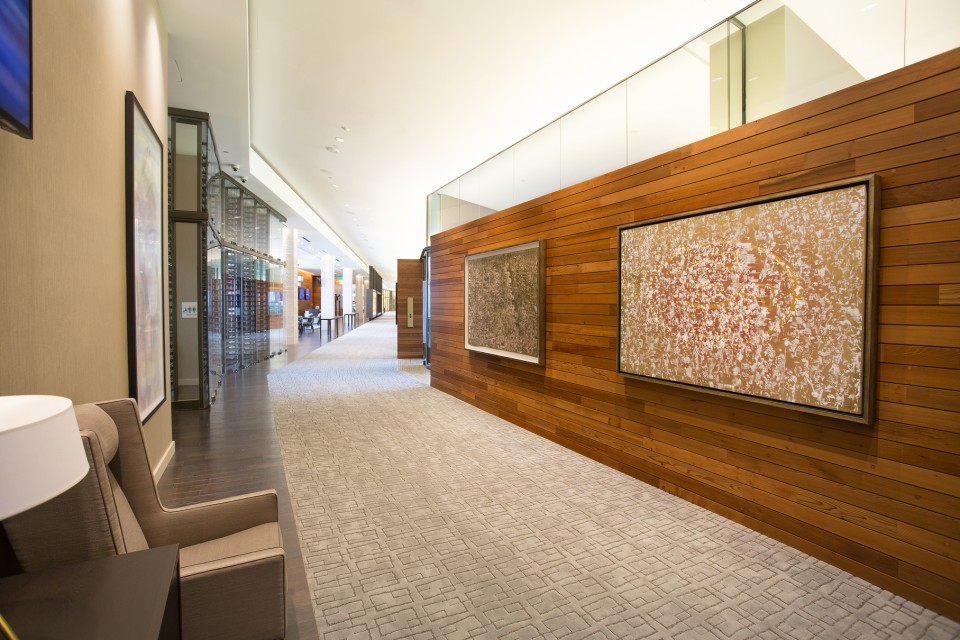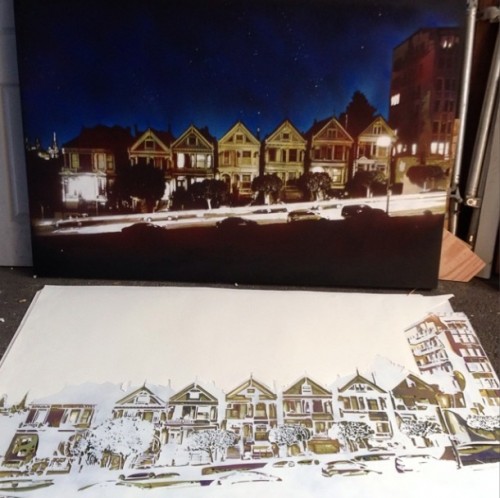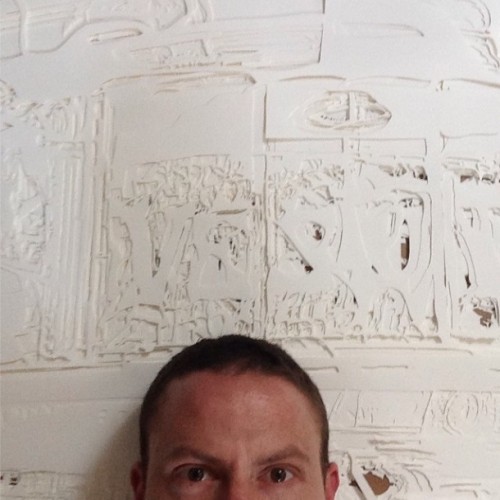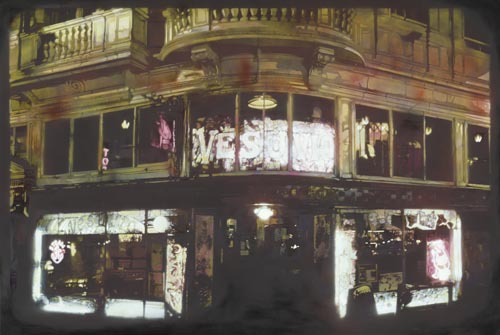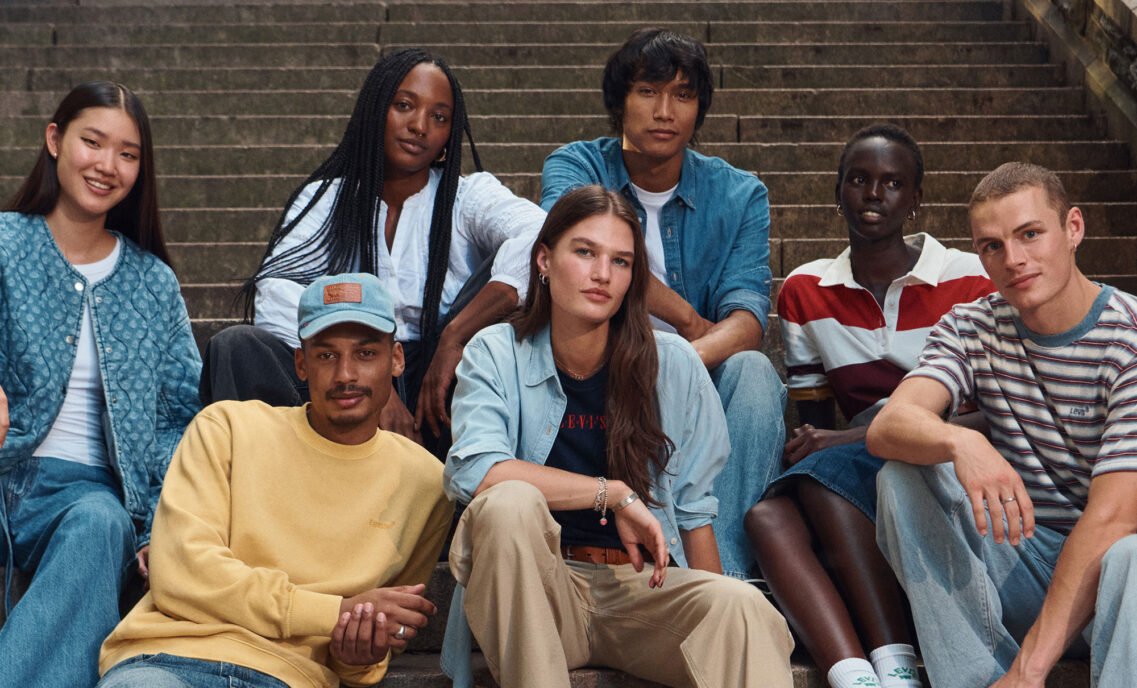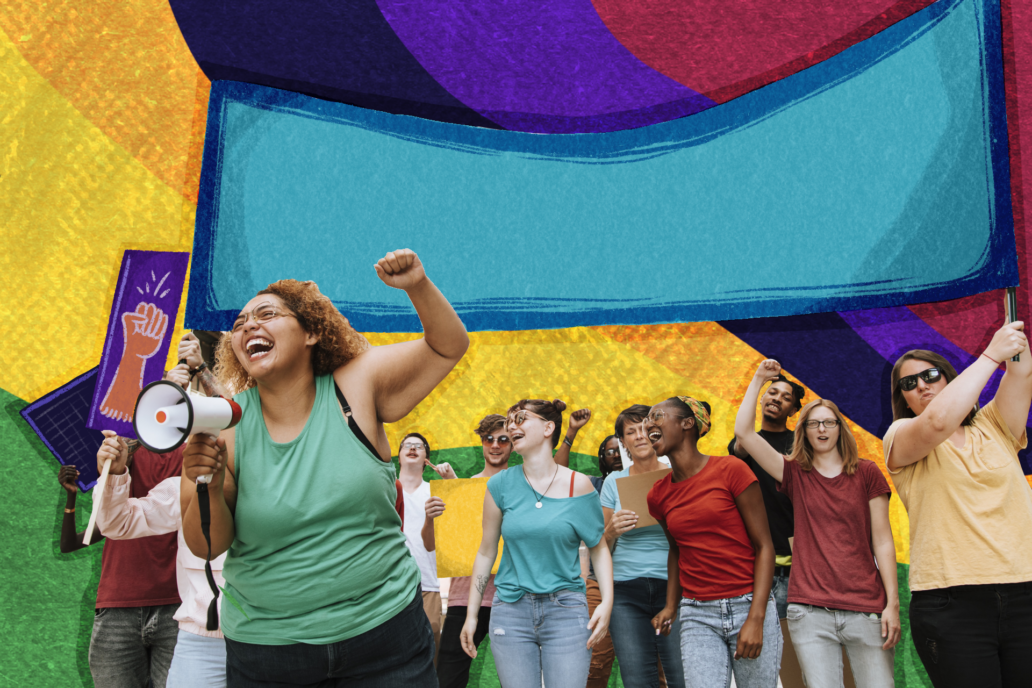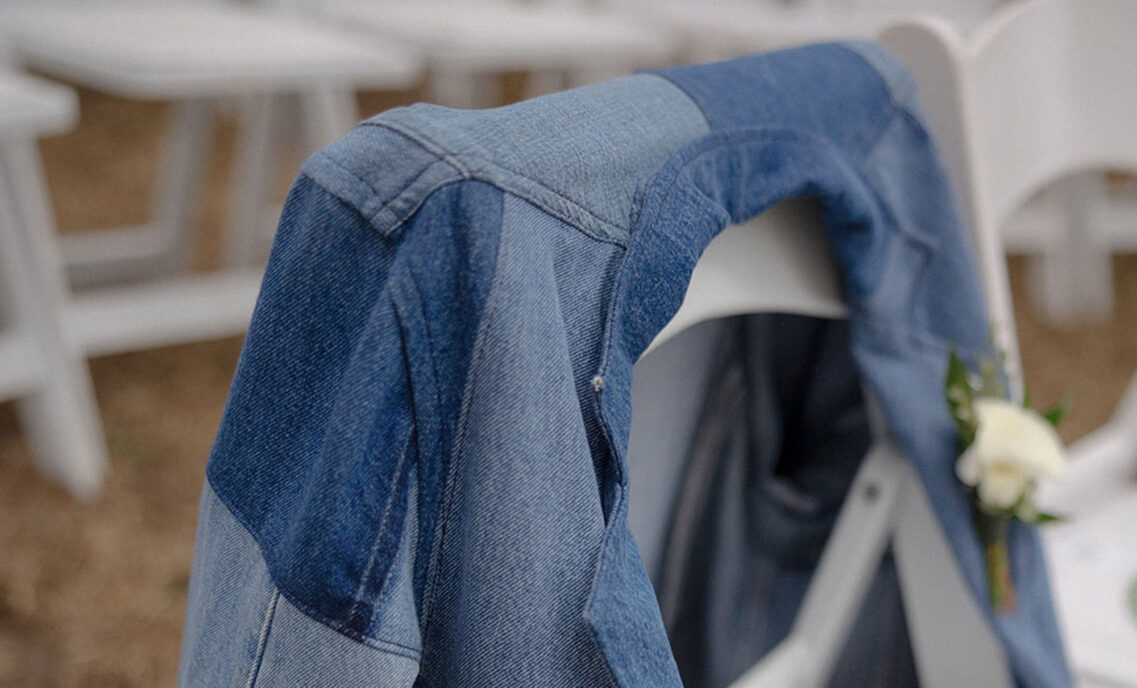Art, like sports, has the power to bring people together. So when LS&Co. and the 49ers set out to build Levi’s Stadium, the plan also included building a collection of artwork that inspires the same spirit as the complex itself. The Levi’s® Stadium collection includes 200 original pieces of artwork and 500 photographs. Of the 23 original artists on display, 20 are from the Bay Area.
In our Levi’s Stadium Artist Series, Unzipped spoke with a few featured artists to bring you a closer look at the creative process behind the pieces that hang on the walls of this cultural touchstone. It’s the next best thing to journeying to Levi’s Stadium to see the stunning works in person!
First up, Adam Feibelman, who combines photography, stencil creation, and spray painting for a completely unique take on his city.
UNZIPPED: Tell us about your process.
ADAM FEIBELMAN: I go out on my bike and take tons of photographs. Then I whittle them down to my favorites. From an enlarged version of the photograph, I cut out stencils, starting with what I perceive to be the bulkiest shapes. Subsequent layers are about refining those big shapes into smaller shapes. I work from dark to highlight, one layer at a time. Then I spray paint through each stencil to make the painting. It’s sort of like a printmaking process. When I am done with the paper stencils I collage them back together and sew them up to reveal the process. So the paintings and the stencils hang side by side.
How did you come up with this process?
It developed pretty organically. In my earlier life, I spray painted a lot. Graffiti got me into art school. In art school, I studied illustration and printmaking. I kind of forgot about spray paint while I focused on technique. But when I graduated and no longer had a print shop to work in, I asked myself what I am I going to do and what do I do best? Spray paint and color separation. I started toying around with stencils. And next thing you know, fourteen years later it turned into this thing where there can be fifteen layers in one piece.
One of the main reasons I started doing the sewn stencil set is people would look at my paintings and go, “I don’t understand. Why did you have this printed on a piece of wood?” I felt like I needed to expose the bones by showing the stencils.
Tell us about the landmarks you focused on for the Levi’s Stadium collection.
For the Painted Ladies piece, the photo that I chose to work from was a night scene with a long exposure. Cars are driving by and lights are on. It’s a depiction of the landmark you don’t typically see.
We also wanted something to do with the beat poets. I’ve gone to City Lights ever since I moved to the Bay Area in ’97. We settled on Bar Vesuvio in North Beach. Getting those photographs was the biggest challenge, because of all the traffic all the party animals everywhere!
The third piece is a fan shot from Candlestick. I wanted to focus on the fans rather than the players. The photograph I took must have about 3000 people in it. One-by- one, I cut each person out. It was time-consuming—but fun. I snapped the photo right as the 49ers had scored a touchdown. It was so interesting to see the range of emotion going on.
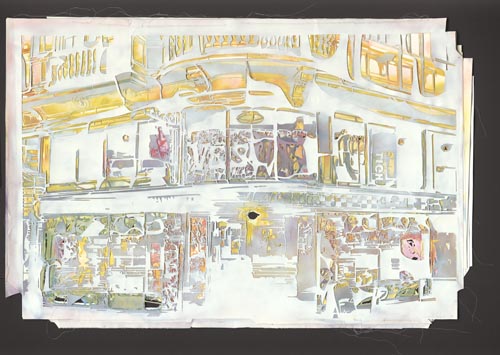
What did it feel like to be chosen to exhibit in the stadium?
Anytime you can be a part of the permanent infrastructure of an area, it is a huge honor. I’ve always felt like San Francisco and the greater Bay Area has really embraced me and held me up. And it speaks to the nature of art too—people love it and want it.
Plus, I live and breathe in Levi’s Commuters. I ride a bicycle every day—and they’re perfect. Art is really hard on clothes—there’s no way around it—but they don’t get messed up too easily, even though I torture them.
Is your cycling related to your artwork?
Absolutely. In order to get the photographs for my work I have to have an intimate relationship with my environment. Ingesting the city on the pace of a bicycle provides for lots of ways to look at things from a different perspective. It also allows me the freedom to be able to stop and get off my bike and look at something closer if I need to. And I hope that people respond to my paintings as if they too are being asked to slow down.
Follow Adam Feibelman’s amazing work on Instagram @adam5100.



